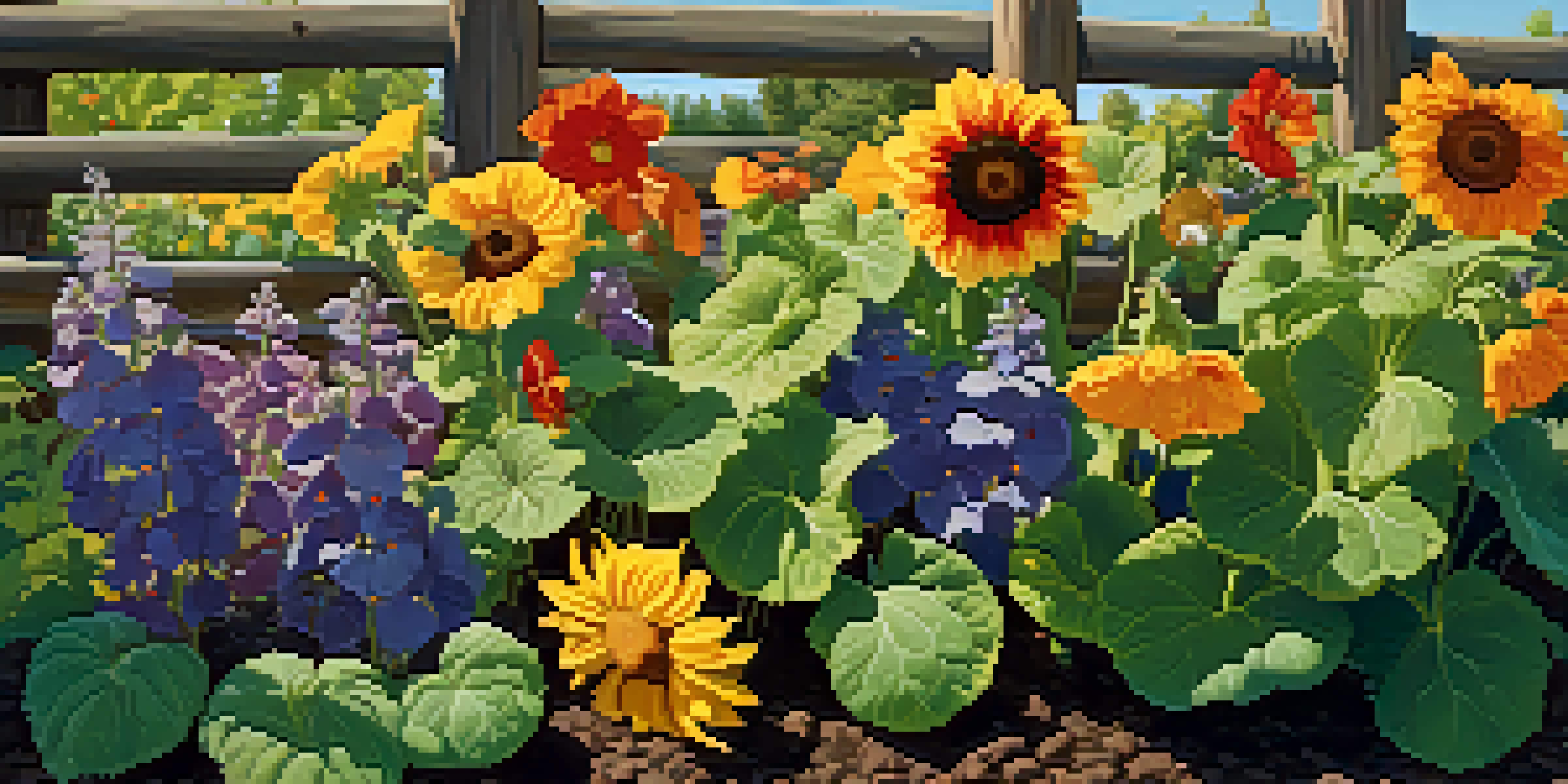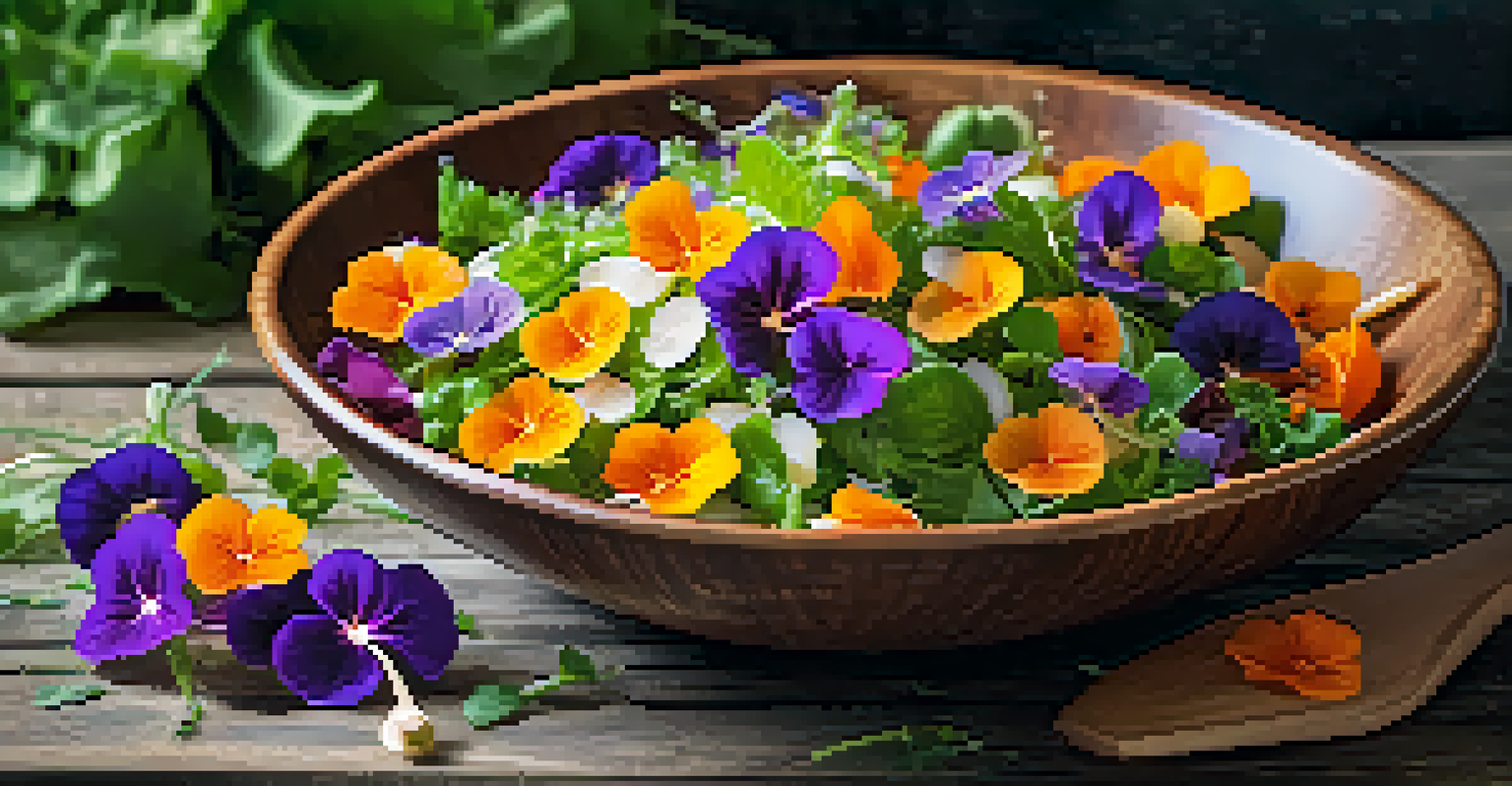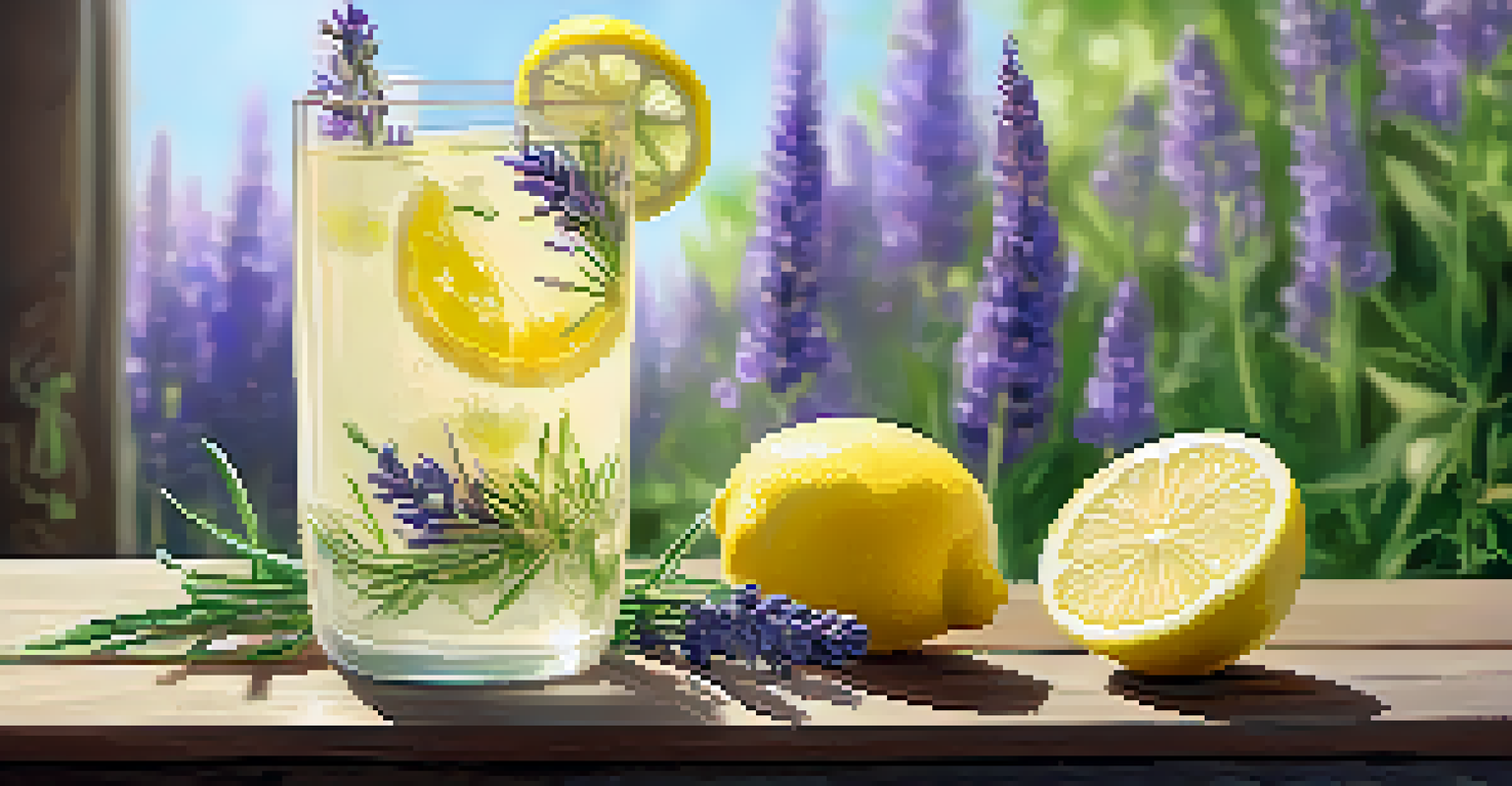Edible Flowers: Adding Color and Flavor to Your Garden Design

What Are Edible Flowers and Why Use Them?
Edible flowers are blossoms that are safe to consume, adding both beauty and flavor to dishes. Think of them as the vibrant accessories that can transform your garden into a culinary paradise. Not only do they enhance the aesthetic appeal of your garden, but they also offer unique tastes and nutritional benefits.
The greatest gift of the garden is the restoration of the five senses.
Many common flowers like nasturtiums, violets, and pansies are edible and can be used in salads, desserts, and drinks. Incorporating these flowers into your garden design allows you to enjoy both their visual beauty and their delightful flavors. Plus, they'll attract beneficial pollinators, making your garden thrive.
Using edible flowers is a creative way to bring a touch of whimsy to your meals and impress your guests. Imagine serving a salad adorned with colorful petals or a refreshing beverage garnished with a delicate bloom. The possibilities are as endless as your imagination!
Choosing the Right Edible Flowers for Your Garden
When selecting edible flowers, consider your climate and the growing conditions in your garden. Some flowers thrive in sunny spots, while others prefer partial shade. For instance, sunflowers and marigolds love the sun, while nasturtiums can tolerate some shade, making them versatile choices for various garden designs.

It's also essential to consider the flavor profiles of the flowers you choose. Some, like chamomile, have a sweet, apple-like taste, while others, like chive flowers, offer a mild onion flavor. By mixing and matching different varieties, you can create a garden that not only looks good but also tantalizes your taste buds.
Edible Flowers Enhance Meals
Incorporating edible flowers into your dishes adds visual appeal and unique flavors.
Don't forget to check for any potential allergies or sensitivities, as some people may react to specific flowers. Always do your research to ensure that the flowers you plan to grow are safe to eat and compatible with your gardening goals.
Designing Your Edible Flower Garden
Creating an edible flower garden can be both practical and aesthetically pleasing. Start by choosing a layout that complements your existing garden design, such as a dedicated flower bed or interspersing flowers among your vegetable plants. This way, you can enjoy the visual beauty while maximizing your space.
Flowers are the music of the ground. From Earth's lips they speak.
Consider using a variety of colors, shapes, and heights to create visual interest. Tall sunflowers can provide a stunning backdrop, while trailing nasturtiums can drape elegantly over edges. Grouping flowers in clusters can add a pop of color, making your garden a feast for the eyes.
Incorporating edible flowers into your garden design not only enhances its beauty but also provides easy access for harvesting. Placing flowers near your kitchen or patio can encourage you to use them more often, transforming mealtime into a creative culinary adventure.
Caring for Your Edible Flower Garden
Like any garden, an edible flower garden requires proper care to thrive. Regular watering and adequate sunlight are crucial for healthy growth. Be mindful of the specific needs of each flower type, as some may require more water or different soil conditions than others.
Fertilizing your flowers can also boost their growth and enhance their colors. Organic options, like compost and fish emulsion, can be great choices that promote healthy blooms without harmful chemicals. Just remember to follow the recommended application rates to avoid overwhelming your plants.
Designing a Thriving Garden
Choosing the right edible flowers based on your climate and garden conditions can create a beautiful and productive space.
Additionally, regular pruning and deadheading can encourage continuous blooming and prevent pests. Keeping an eye on your garden will help you spot any issues early, ensuring that your edible flowers remain vibrant and flavorful throughout the growing season.
Harvesting Edible Flowers Safely
Harvesting edible flowers is a delightful part of gardening, but it's essential to do so safely. Always pick flowers in the morning when they are at their freshest and before the heat of the day wilts them. Gently twist or cut the flowers from the stem, taking care not to damage the plant.
Be sure to wash your flowers thoroughly before consuming them, as they can harbor dirt, bugs, or pesticides. If you want to ensure the purity of your flowers, consider growing them organically and avoiding any chemicals in your garden. This will provide peace of mind as you enjoy your floral culinary creations.
Lastly, only harvest the flowers you are certain are edible. Some flowers can look similar, but not all are safe to eat. Having a reliable resource or guide can help you identify which blooms are safe and ensure that your garden remains a delicious and enjoyable experience.
Incorporating Edible Flowers into Your Cooking
Once your edible flowers are thriving, it’s time to bring them into your kitchen! They can be used in a variety of dishes, from salads to desserts, adding visual appeal and unique flavors. For example, sprinkle some nasturtium petals on a salad for a peppery kick or use violets to decorate a cake for a touch of elegance.
You can also create floral-infused beverages, like refreshing lemonade with lavender or chamomile tea. The subtle flavors and aromas of your homegrown flowers can elevate your drinks and impress your guests. Don't shy away from experimenting with different combinations to find your favorite pairings.
Safe Harvesting Practices
Properly harvesting and washing edible flowers ensures they are safe and delightful to consume.
Incorporating edible flowers into your cooking not only enhances meals but also fosters a deeper connection to your garden. Every time you use a bloom from your garden, you’re reminded of the hard work and love you put into nurturing your plants, making each dish even more special.
Conclusion: The Joy of Edible Flowers
Incorporating edible flowers into your garden design is a beautiful way to enhance both aesthetics and flavor. Their vibrant colors and unique tastes can transform ordinary meals into extraordinary experiences. Whether you’re a seasoned gardener or just starting out, growing these blooms can be a rewarding journey.
Not only do edible flowers provide visual appeal, but they also attract pollinators and can contribute to a more biodiverse garden. By cultivating a variety of edible blooms, you create a space that supports the environment while bringing joy to your cooking.

So, why not give edible flowers a try in your garden? Embrace the beauty, flavor, and creativity they offer, and watch as your garden turns into a colorful, culinary haven!